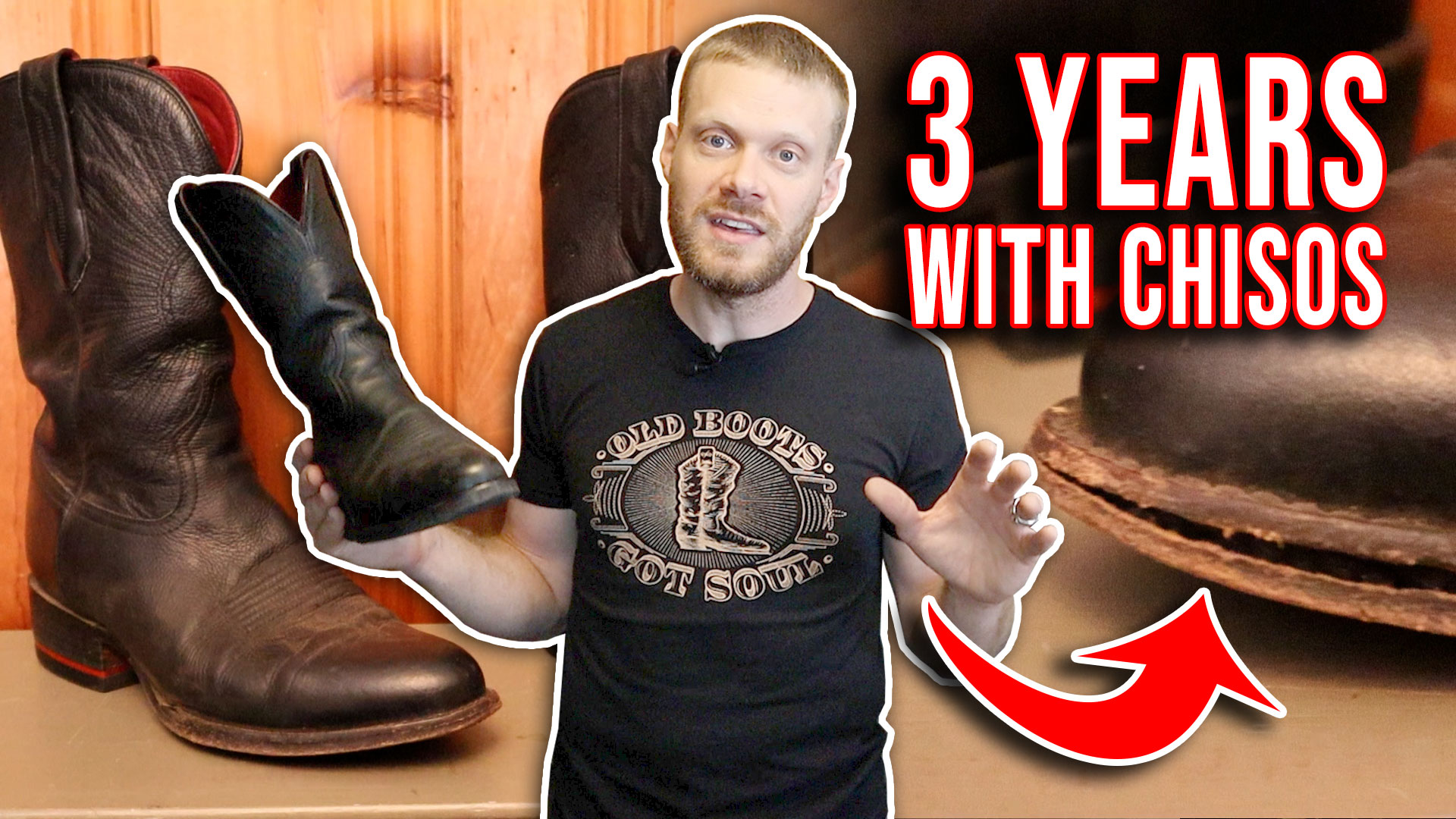
Today, I’m excited to share my three-year journey with a pair of Chisos boots that have been through thick and thin (literally) with me. In this post, I will break down my experience with the outsole, the insole and the leather itself so let’s jump right in and talk about the first three years with these boots’ outsoles.
Three years with the Outsole
So, over the course of three years, I’ve put these Chisos boots through their paces. I didn’t wear them every single day, but they’ve seen their fair share of action, especially in the rainy and snowy conditions here in the Northeast. Now, one thing you need to know about leather outsoles on boots is that they soak up moisture like a sponge. This can cause the leather to expand and contract, ultimately leading to the outsole separating from the welt.
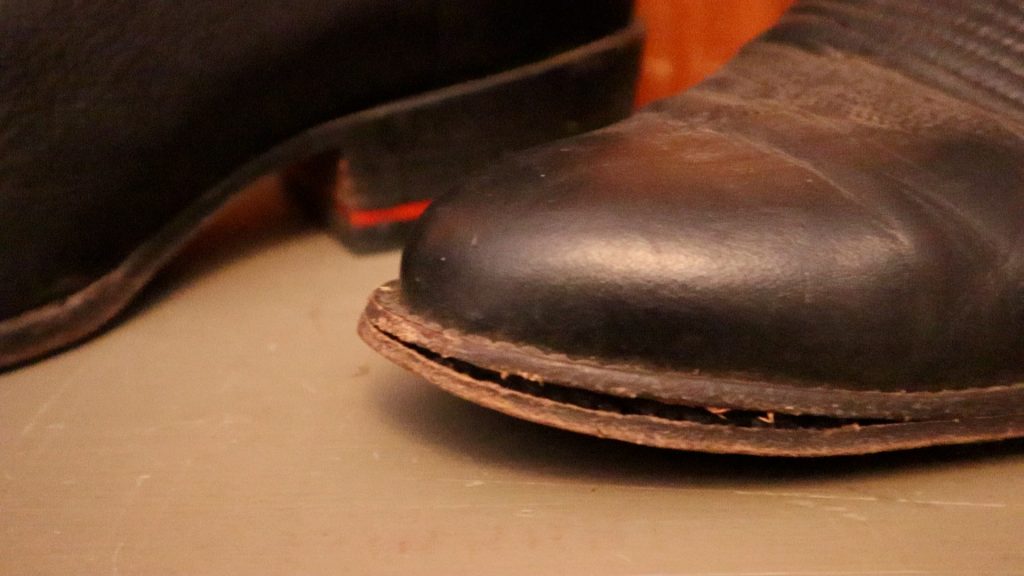
This phenomenon isn’t unique to Chisos boots; it’s a common issue with many factory boots, including some big names like Tony Lama and Boulet. In fact, my Boulet boots have seen six resolings due to this very problem. It’s just the nature of leather outsoles when exposed to wet conditions.
The downside to using stronger glues is that they have been known to damage welts when boots are resoled by some repair shops. That’s not to say that using a stronger glue is bad. Custom boot makers repair boots that use stronger glues all the time but using a more average glue makes these boots easier to be repaired by the average cobbler.
Switching to Rubber: A Game Changer
So, what did I do to address this issue with my Chisos boots? I opted for a rubber resole. Rubber doesn’t soak up moisture like leather, and it won’t separate from the welt in wet conditions.
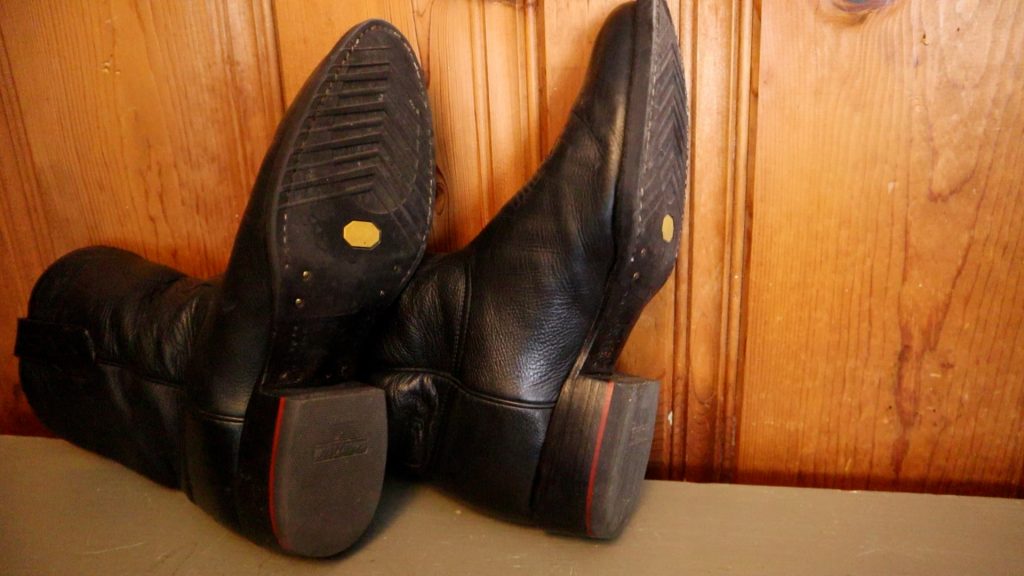
The rubber resole not only addressed the moisture problem but also gave me better grip on wet and snowy surfaces. I initially tried to find a boot repair shop that specializes in Chisos boots but didn’t hear back from them, so I turned to my friends over at carterboots.com, who did an excellent job with the rubber resole.
Three Years with the Insole
Now, let’s dive into the unique world of Chisos boot insoles. These insoles are unlike anything else on the market, and I’ve spent three years experiencing their magic firsthand.
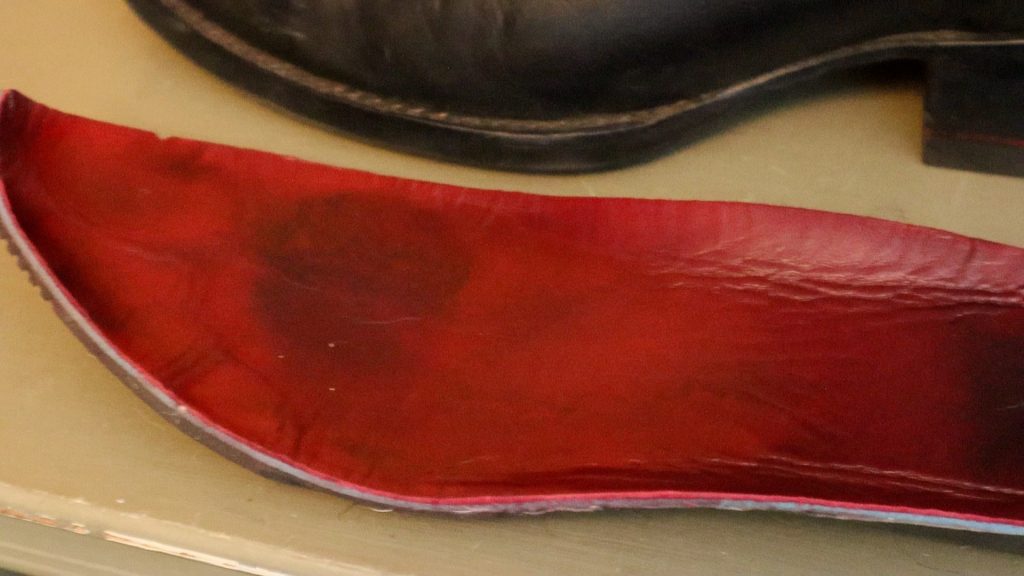
The Thick, Comfy Insole
Chisos boots sport a thick insole that I can confidently say hasn’t flattened out at all over three years of use. Other brands have tried to mimic this insole, including Tecovas in their Ranch Wear line, but they fall short in comparison. The Chisos insole is thicker and more comfortable, thanks to its careful integration into the boot’s construction.
Cushion and Support
Whenever I needed a break from breaking in new boots for reviews, I turned to my Chisos. The insole provided my feet with a much-needed respite. It’s not just cushioning; it offers excellent support too. The combination of cushion and support makes these boots feel spectacular, especially for those long days on your feet.
The Narrow Width Issue and the Red Dye
There are a couple of things to note about these insoles. First, Chisos boots don’t come in narrow widths, which was a bit of a hindrance for me as a true 12B. At times, my toes felt cramped in the toe box, so I couldn’t wear them for extended periods. I hope Chisos considers introducing narrow widths in the future.
Second, the red dye on the leather liner can bleed onto your socks, especially if you’re wearing white socks. Some people see this as a badge of honor, a sign of breaking in their Chisos boots, while others prefer to wear black socks to avoid the dye transfer. Personally, it doesn’t bother me, but it’s something to be aware of.
The Extra Height Boost
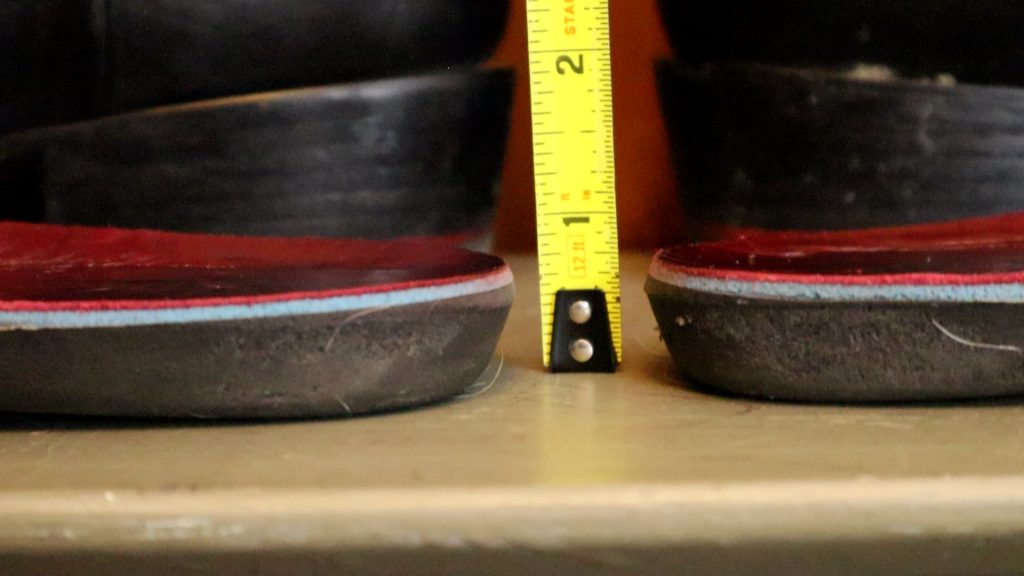
Lastly, you’ll feel pretty tall when wearing Chisos boots because of the thick insole. These boots come with about an inch and a half of heel, and when you add the insole, it feels like an extra three-quarters of an inch to an inch. So, if you’re on the shorter side and want a subtle height boost, Chisos can give you that extra lift.
Three Years with the Leather
Now, let’s talk about the leather itself. Chisos boots are crafted from dairy cow leather, and my experience with it has been rather interesting.
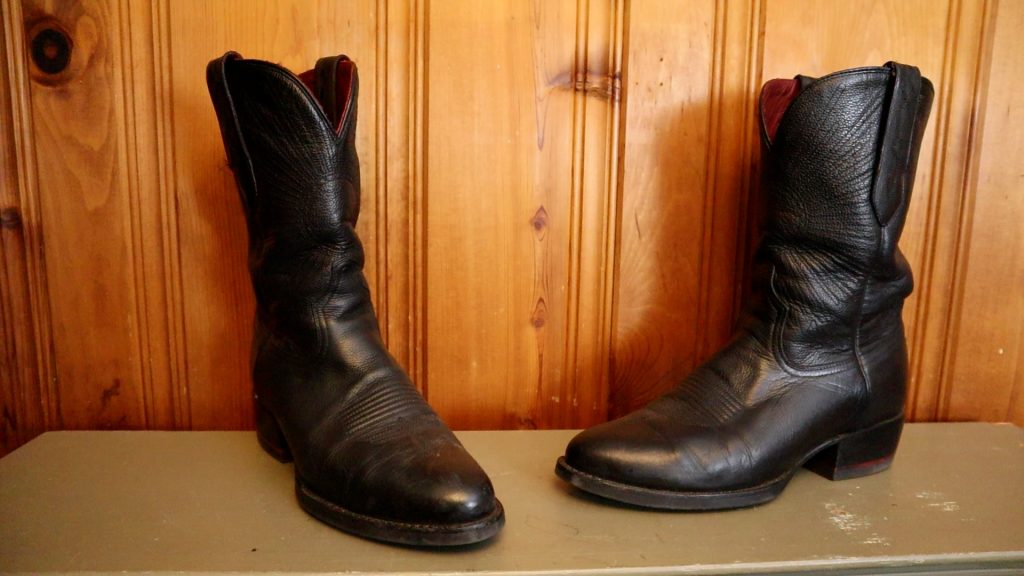
Dairy Cow Leather Myths
Before getting my hands on these boots, I heard mixed opinions about dairy cow leather. Some said it was better suited for upholstery and claimed it stretched excessively in footwear. My experience was different. I didn’t find it stretching any more than other boots I own, like bullhide boots. In fact, I wish it stretched a bit more because my narrow feet occasionally felt cramped in the D width.
Softness and Suppleness

What I truly love about the leather is its softness. These boots felt supple right out of the box and only got softer with time. The more I wore them, the better they felt. They didn’t get overly stretched or sloppy, maintaining a perfect balance between comfort and structure.
A Unique Niche in Cowboy Boot Industry
In summary, Chisos boots fill a unique niche in the cowboy boot industry. They’re traditionally made but offer the added benefit of a unique insole that sets them apart. If you’re searching for a high-quality boot with the craftsmanship of old but with modern comfort, Chisos should be on your radar.
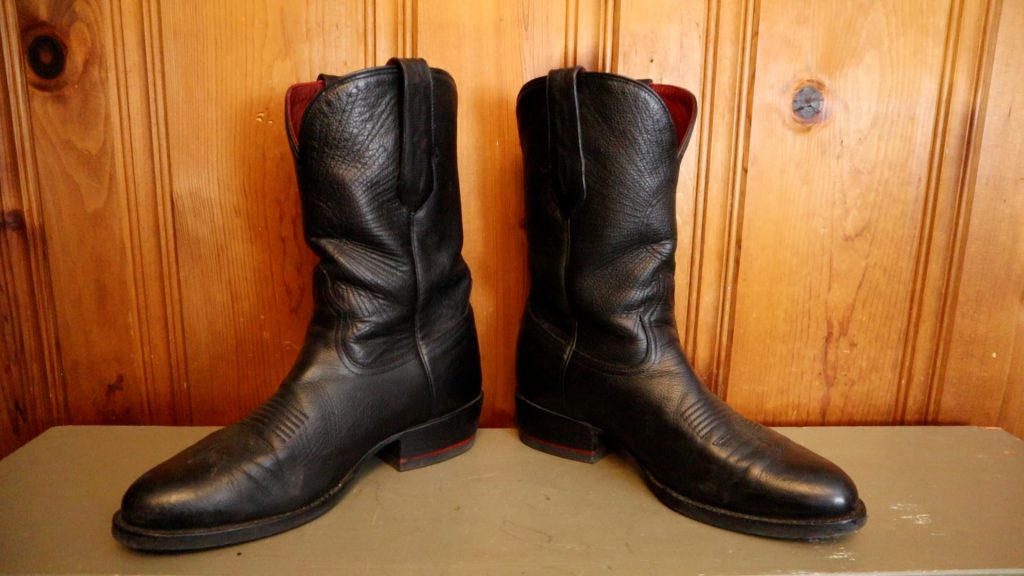
The only drawbacks I found were the absence of narrow widths, which cramped my toes at times, and the red dye bleeding onto white socks. However, these minor inconveniences are easily outweighed by the incredible comfort and unique experience Chisos boots provide.
So there you have it, my three-year journey with Chisos boots, from outsole to insole to leather. I hope this review helps you decide if they’re the right fit for your boot collection.
Until next time, stay stylish and comfortable!


